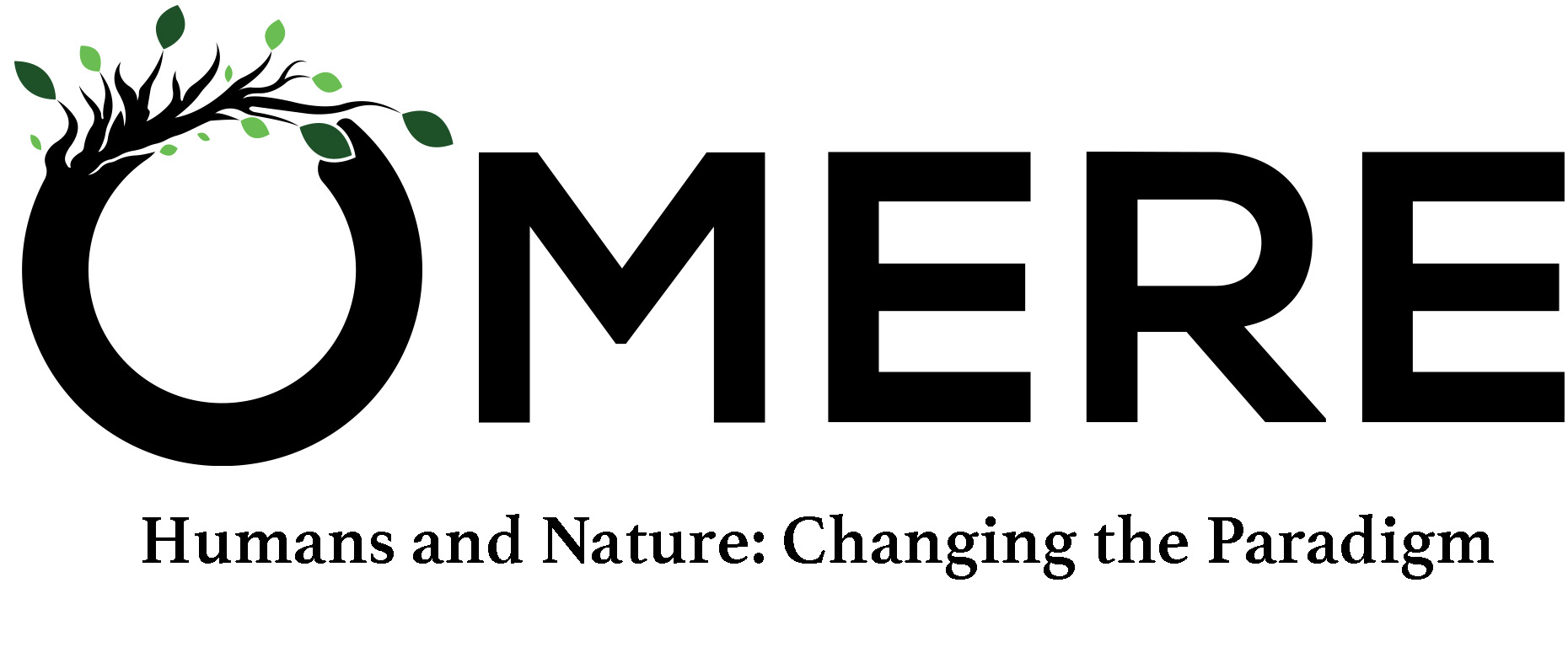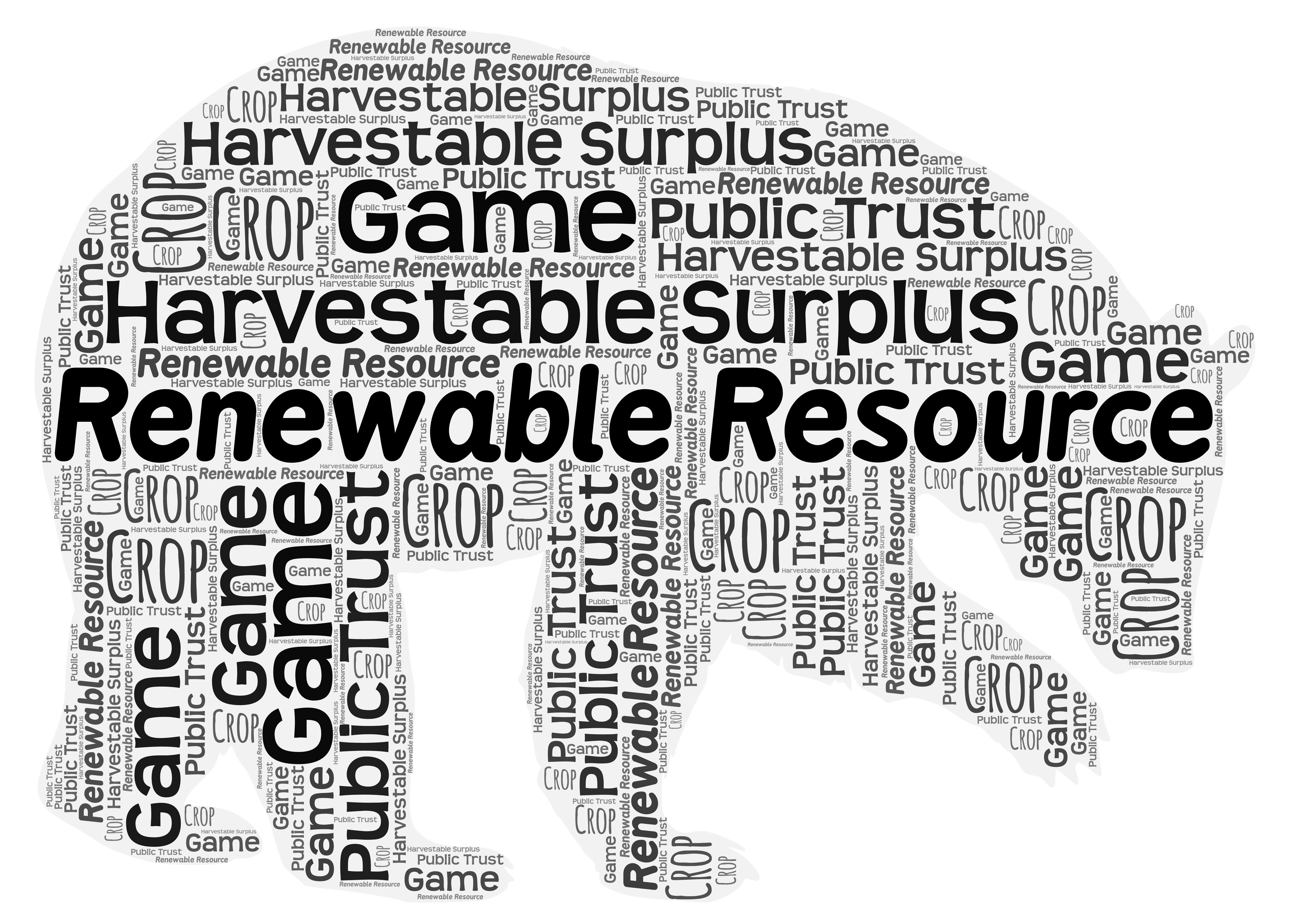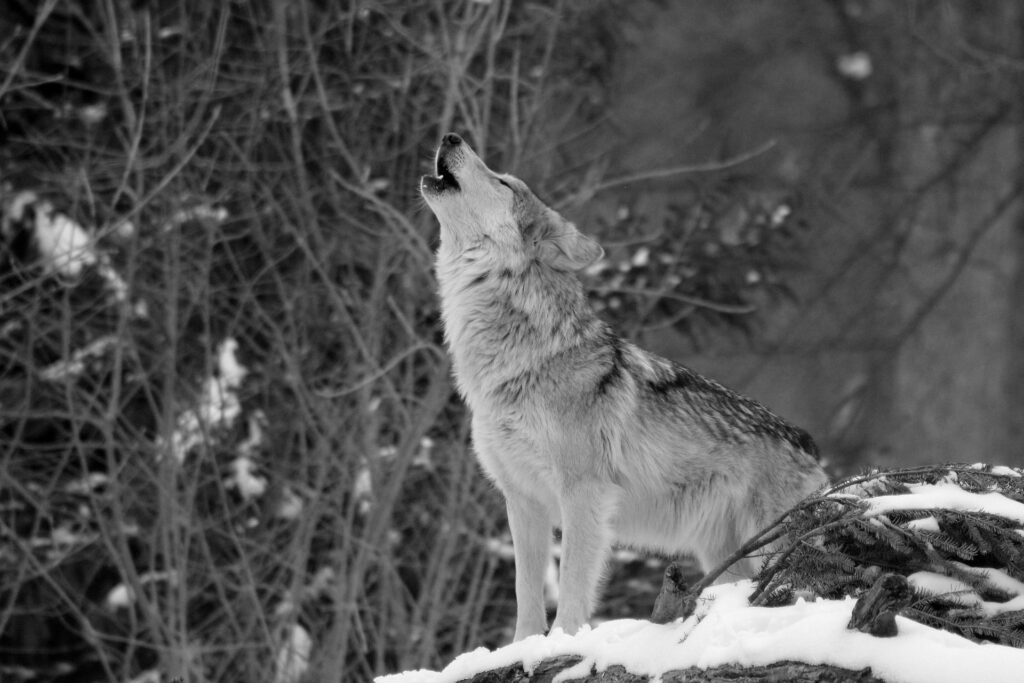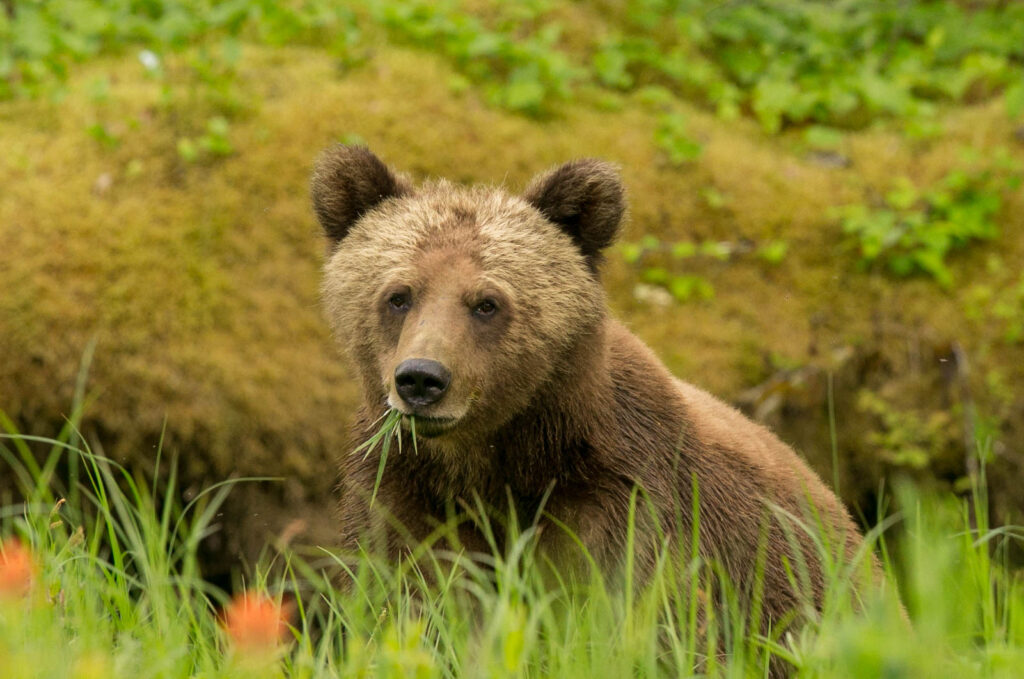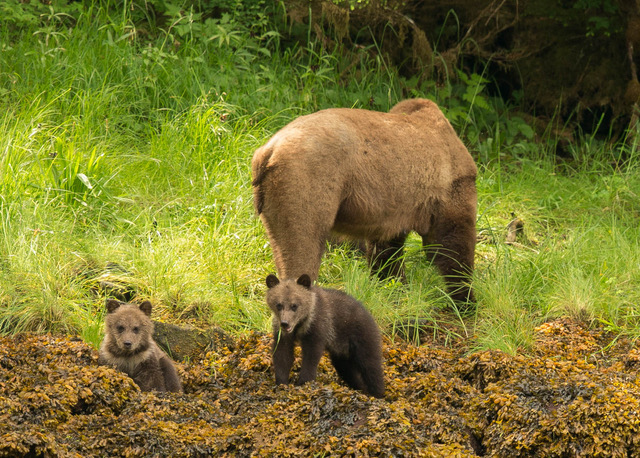“[We] must deny life in order to study it.” It is like “apply[ing] the knife to the vocal cords…of life itself.” ~ Neil Evernden
After a prolonged winter hibernation, black bears are coming back to life. It’s also the time for hunters to find them and end their life. In British Columbia, the spring hunt begins in April and terminates in June, while the fall hunt starts in September and finishes in December. Hunters are getting ready. Their exchanges and discussions center on what weapons to use, with some switching from rifles to bows, or on seeking specific advice, such as the best brand of rabbit distress calls. Questions about the shooting technique also arise. Hunters share their experiences for the best shot placement, whether it should be the head, neck, or heart. Some suggest aiming at the shoulder. In this case, even if the bear survives, she won’t be able to escape.
Bears’ grogginess and hunger aid in the hunt. Four or five months of hibernation renders them vulnerable, easy prey for hunters already geared up and primed for adrenaline-seeking rushes. BookYourHunt in BC is brimming with excitement: “Our spring bear hunts are very exciting with numerous sightings per day often in the double digits. … Bears will frequent the southern mountain slopes and newer logging cuts, feeding on the fresh grasses, clover and dandelions in the spring.”
Are we still talking about extinguishing life? How come we talk about killing sentient creatures as we talk about camping equipment or the best trails to enjoy nature?
Well, it is not an incidental occurrence but, instead, the result of a thought-out process. The answer lies in subtracting sentience, pain, suffering and the will to live from wild animals and turning them into resources to be numerically managed or objects to be chased and killed in thrill-seeking escapades. That’s the trick: detachment, indifference. The objectification of wildlife is more than the display of emotional deviance by a recreational hunter. No, it serves a practical purpose. It is an indispensable tool to make recreational hunting psychologically possible by removing it from the realm of morality and ethics and thus allowing the hunter to engage in a lethal endeavour while maintaining his emotional core intact.

Photo Credit: Sebastian Pociecha/Unsplash
Both hunters and wildlife researchers rely on this tool. In my earlier essay, “Discarding Euphemism: the fate of animals deserves faithful words,” I explore how the use of agricultural metaphors shaped the field of wildlife management. Aldo Leopold, widely regarded as the founder of the scientific field of wildlife management, applied the principles of sustained yield forestry to promote the growth of sustainable “game” populations for hunting purposes. In his words, game management is “the art of making land produce sustained annual crops of wild game for recreational use.” Obviously, on the language level, it’s also the art of stripping wild animals of their cognitive and emotional domains.
In Leopold’s view, wild animals had value as a collective, not as individuals. What warranted protection was the notion of a healthy “biotic community” essential to ensure profitable hunting. Rather than intrinsic, instrumental worth defined animals whom Leopold didn’t consider co-participants in the “circuit” of life. … Instrumental worth, is this all, really? If so, then the mystery of nature vanishes. The spiritual communion with the wilderness that children intuitively experience and romantic poets cherished and eulogized gets degraded into a simple subject-object or user-used exchange devoid of a moral position.
The euphemistic language also makes the horrific enterprise more palatable for the public
Erasing animals’ individuality and detaching the human-wildlife relationship from moral considerations have had far-reaching implications. Once accomplished, such a falsification of sentience proved advantageous for both practicing wildlife management and selling it to the public. Practitioners — managers, researchers, and hunters — felt absolved from pangs of conscience and moral disquietude since they were no longer engaged in afflicting pain and suffering but were, instead, ensuring the sustainability of “harvestable crops.” The euphemistic language also makes the horrific enterprise more palatable for the public. Predictably so, for just as visceral descriptions of violence heighten public alertness, technocratic or abstract vocabulary lessens it.
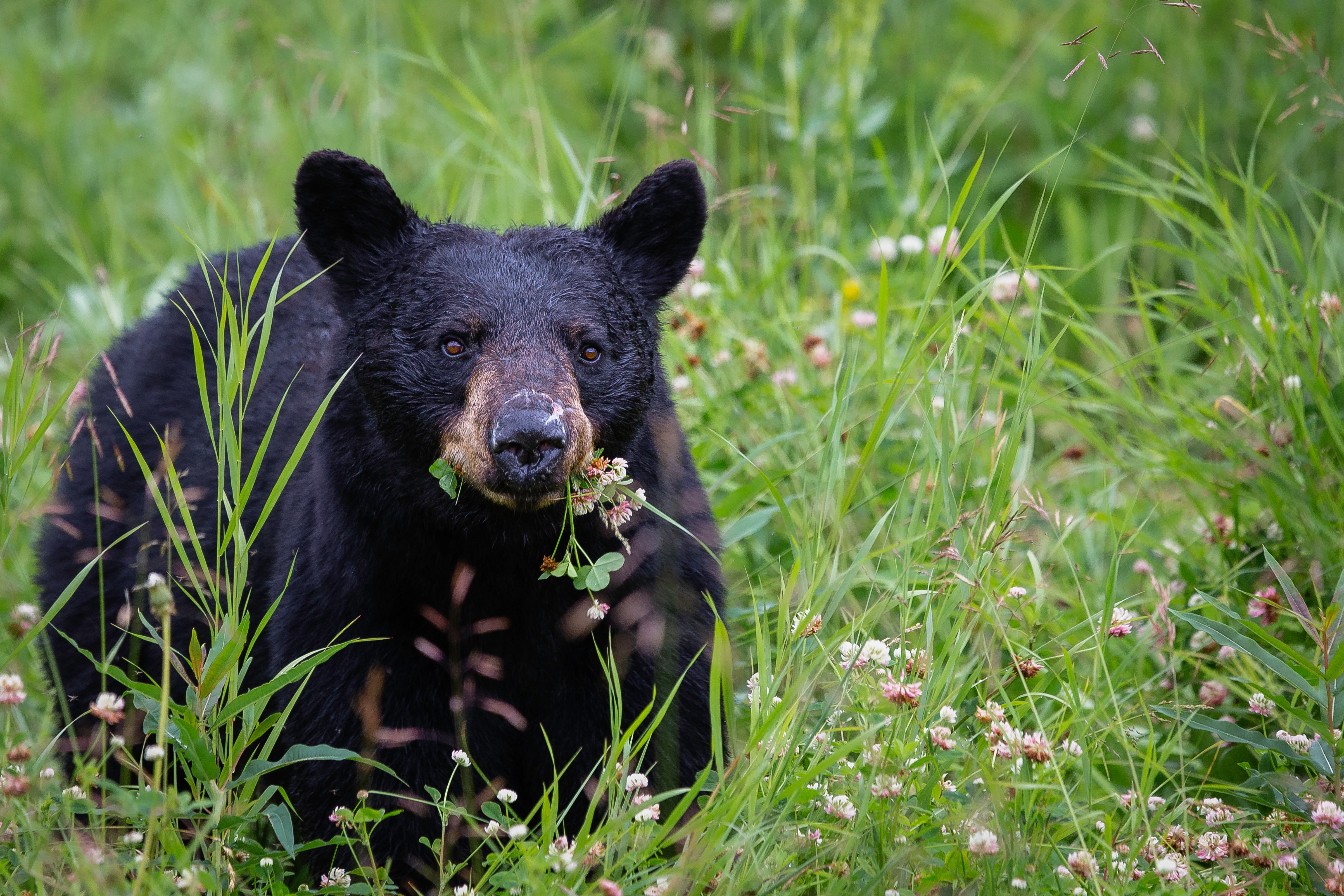
Photo Credit: Pete Nuij/Unsplash
Leopold’s Game Management and his push for formulating science-based wildlife policies were pivotal to developing the North American Model of Wildlife Conservation (NAM). Formally articulated in 2001, the NAM is promoted by hunters as “is the world’s most successful system of policies and laws to restore and safeguard fish and wildlife and their habitats through sound science and active management.” It sanctioned wildlife as “public trust resources” that are “renewable” if managed “wisely.”
Clearly, the euphemizing of language, initiated by Leopold, seems to proceed unabated. If anything, followers have outdone the pioneer. Hunting down wild animals has fully metamorphosed into the management of “surplus resources” or the pursuit of a supposedly “innocuous” recreational hobby that also happens to be conducive to predator control. Or into an alternative feeding opportunity where a wild creature is chased and valued as a source of protein. A superfluous source, unlike in the case of true indigenous subsistence hunters. The NAM and its variously motivated practitioners altered, therefore, the reality. A viewfinder of a camera and a viewfinder of a rifle walk in unison. Boundaries have blurred. From a moral or ethical standpoint, the difference between engaging in harmless outdoor activities and those camouflaged as harmless has become indistinguishable.
If “game” is “taken” or “harvested,” then both the subject of an action and the action itself lack feelings and emotions.
Blurring boundaries between outdoor activities and subtracting suffering from the slaughter through abstract, detached vocabulary have normalized hunting. This is a critical step to render engaging in it emotionally acceptable. To kill without guilt, a hunter must relegate wild animals to a much lower category of beings. This separates them even more from humans with whom we instinctively associate pain, especially emotional one. As Mallory writes, “a conclusion must be reached that the animal is somehow “lower” or “lesser” than oneself in order to justify sacrificing its (vital) needs to one’s own (nonvital) wants.” The language clearly helps. If “game” is “taken” or “harvested,” then both the subject of an action and the action itself lack feelings and emotions. A bear and a cougar resonate with us as creatures with emotions encoded in the nervous system, but does the same apply to “game?” Similarly, “killing” presupposes the existence of a sentient life, but “harvesting” not necessarily so. As a result, accountability, morality, and ethics no longer enter the equation.
There is, however, a contradiction at the core. The very determination to redefine wildlife as crops or inanimate objects betrays a suppressed belief that they are not so. It can’t be otherwise; it won’t work otherwise. An inner divergence threatens the psyche, and, to subdue surging uneasiness, technocratic vocabulary comes to aid. Basic psychology, indeed. Cognitive dissonance demands consistency, and since acknowledging the sentient life and killing it is bound to instigate an inner conflict, such an acknowledgment needs to be denied, disqualified, and erased to ease the anxious mind.

Photo Credit: Pete Nuij / Unsplash
Sadly, distorting reality with falsifying words is not the only way to nullify the suffering of nonhuman nature. In his book, “The Natural Alien: Humankind and Environment,” Neil Evernden discusses the work of Claude Bernard, the revered father of experimental medicine, who, in the name of science, had no qualms about listening to the screams of animals being ripped apart at the operating table. He “believed that his higher calling exempted him from such considerations.” Many of Bernard’s followers lacked, however, his perfect detachment and “adopted a routine precaution: at the outset of an experiment they would sever the vocal cords of the animal on the table, so that it could not bark or cry out during the operation.”
“Severing the vocal cords” of animals — whether literal, as in the case of vivisection, or metaphorical that “silences” the cruelty inflicted on them by depicting wildlife in euphemistic, technocratic terms — is an immoral act
The sight of a frantic animal with her mouth stretched but no sound coming out is easier to take and easier to reimagine as the reflection of Descartes’ mindless machine. After all, it’s often someone’s cry that evokes compassion, elicits empathy, awakens humanity in us. It separates sentient beings from inanimate objects or even plants. On the other hand, as Evernden rightly argues, isn’t cutting the cords to silence the piercing scream an act of emotional self-defense, an admission that this scream is indeed the sound of pain and suffering?
Yes, animals suffer; they experience emotional and physical anguish as we do. We know it, and deep down, hunters as well as wildlife managers and researchers know it, too. That’s why they need each other. A mutually beneficial symbiosis connects them. Hunters seek from wildlife managers and researchers a scientific rationalization for shooting wildlife, while wildlife managers and researchers who ascribe to the NAM see hunters as instrumental to “harvesting surplus resources.” A large “surplus resources” that is, because, in Canada, the “harvest” of wildlife is invariably plentiful. Each year, between 25,000 and 30,000 black bears are “harvested” as a part of predator management : young and old, male and female. All of them individual lives, all of them disposable.
“Severing the vocal cords” of animals — whether literal, as in the case of vivisection, or metaphorical that “silences” the cruelty inflicted on them by depicting wildlife in euphemistic, technocratic terms — is an immoral act. It degrades animals but also diminishes us, humans. That is why, one hopes, it is an ultimately futile endeavour. Most of us know that animals are more than a trophy, protein, or flesh to be riddled with bullets. They are not charts or numbers but individual, distinct creatures harbouring a beating heart. They have their lives to unfold on their own terms. They have their own stories.
Those who deny them this inalienable right cannot cut our vocal cords. It is up to us to speak, fight, and push against cruelty. Given the growing awareness of nonhuman sentience, prevailing might not even be that hard. As with other injustices that have plagued human history, what seems insurmountable is bound to crumble. Animals deserve a better fate. Let’s make granting it to them one of the missions of our time.
